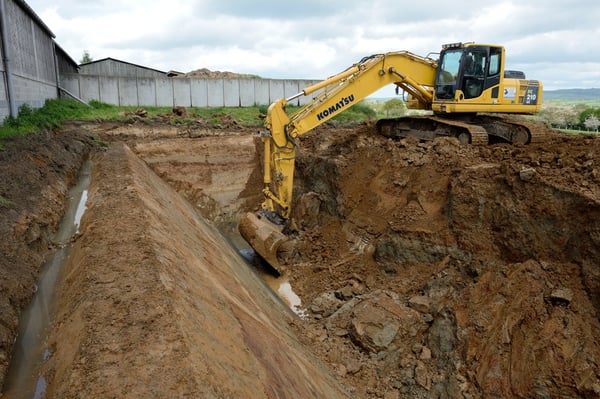Don’t panic - that’s my first piece of advice - finding bones on a construction site can mean a whole range of things so it’s best just to remain calm and follow the five steps below. Also, keep in mind that not all bones are human, you could have dug up what was once a local animal or family pet on-site or even dinosaur bones! No matter the type of bones or the amount be prepared to lose at least a days worth of work.
Found bones on your site?
Bones found on a construction site can lead to massive delays or only an afternoon lost. If you are the project manager you will need to start planning for all potential outcomes and start to communicate with affected parties in case this discovery means a site shutdown for days, weeks, or months.
Before you consider just digging them up and removing them yourself you need to know you could potentially face charges depending on what you have found. No matter if it’s an archaeological site, a potential crime scene, or an old family pet you need to leave it how you found it.
1. Stop construction tasks immediately
All excavation work must be paused or stopped completely as soon as the bones are discovered. Yes, time is money, but fines are also money and you need to consider the potential repercussions, not only financial but reputational as well.
2. Contact the property or project owner
The site manager needs to know the situation right away so they can contact the owner of the land or project. It is also wise to notify the architect or engineer so they are aware of what has happened and if they need to alter any plans for the site.
3. Report the discovery to the police
It is essential that law enforcement is contacted immediately, as criminal charges could be pressed if the discovery is ignored and construction resumes. While you don’t want to be shutting down your site every time a small bone is found. It is always a good idea to err on the side of caution and have them examined, especially with the first ones you find. If they’re examined and found to be common animal bones you often won’t need to contact authorities again, instead you should be able to carefully remove and rebury them.
4. Wait for the remains to be examined
The bones on your construction site could be there for a number of reasons, some unimportant and others very important. Once the authorities examine the bones to determine what they are and how they potentially got there you will either be given the all-clear to resume work. Or the site will be shut down until the examination is complete. If the bones found on your site are linked to a criminal case or are an archaeological find the site could be shut down for a number of weeks or months. It’s vital during this process that you keep in close contact with the authorities so you can organise and restructure your construction plan.

5. Be prepared for more discoveries
After all the procedures have been followed and the authorities deem it ok to continue construction, make sure all workers and operators are aware of the possibility of another discovery and take caution when continuing with earthworks. Even though the owner of the site is required to take action upon the discovery, the contractor may be entitled to reimbursement for financial losses. Ensure there is a clause in your contract that specifies that the landowner is responsible for resolving the discovery of any remains.
What are the chances you’ll find bones on your construction site?
The actual possibility of finding bones on a construction site varies massively and is much more common in countries with a long history. Australia is lucky in this sense for being such a young country, the chances of finding a long-forgotten burial ground from the 12th century or artifacts from the Roman era are just not possible. But in Australia, we do still have big discoveries on construction sites, fossils from ancient times such as bones and stones imprinted with animals or objects preserved in amber, oil, and coal have been found around the country.
Types of bones and artifacts you may find on your construction site
When you are excavating on a construction project you need to be looking for more than just the underground utilities, foreign objects such as bones and artifacts have the potential to be buried all over Australia. However there are hotspots, these are places where European settlement first started such as Sydney, but also other coastal cities and areas that were settled in the 1800s.
Modern Sydney, Brisbane, and Melbourne, in particular, are essentially built on top of the original settlements, meaning there could be a range of bones and artifacts under our very feet. Here is a list of some of the bones and artifacts you could find on your construction site:
- Human bones: Depending on how deep you are digging you could find the bones of an early settler, or an ancient indigenous body
- Animal bones: People often bury dead pets in their backyards so these are common in suburban construction.
- Dinosaur bones: Probably the coolest on the list, Australia is known for being a dinosaur hotspot, so the bones you find may be a new dinosaur never discovered before!
- Fossils: Fossils are things such as stones imprinted with animals, stones with ancient prints and drawings, as well as objects preserved in amber, petrified wood, oil, and coal.
- Relics: Relics are anything from a past time period that holds historical significance, which can be anything from a broken pot to a cobblestone road or a working tool.


